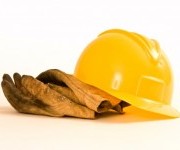Obama is under pressure on two fronts: the international community wants him to commit to serious greenhouse gas emission reductions and American voters want him to spur job creation. Unemployment is hovering at 10 percent and there is populist anger afoot in the country, not just among tea baggers but among people from both parties disgusted by bailouts and coddling of Big Finance. “Throw the bums out” is not a happy place to be for the incumbent party approaching mid-term elections.
Conventional wisdom inside the Beltway is these goals — addressing climate pollution and creating jobs — are in tension. Senate Democrats cower at the thought that climate legislation might be seen as a job-destroying tax, a politically out-of-touch alternative to a jobs bill. Pundits tut-tut that the climate fight has to go on the back burner for now, no matter what the international community thinks.
The politics appear dismal, but they need not be: there are plenty of investments in reducing emissions that would create jobs. The government can create jobs by paying people to make buildings more efficient, to buy more efficient appliances or cars, or to build wind turbines. In a full employment economy, this government spending might displace private spending, but we’re not in a full employment economy. This economy is mired in severe downturn and 10 percent unemployment. In those circumstances, the primary economic directive is to create demand to soak up all the idled capacity. The Fed already has interest rates as low as possible, so the other choice is public spending. In other words: more stimulus. So spend it on things that reduce GHGs!
Stimulate what?
Where can public spending best stimulate demand, create jobs, and reduce emissions? The obvious answer is buildings, for three reasons:
- Unemployment in the construction sector is particularly high, around 17 percent — something like 1.1 million skilled workers and who-knows-how-much manufacturing capacity are sitting idled. These folks are ready to be put back to work.
- Buildings consume 40 percent of America’s energy and produce about that much of its greenhouse gas emissions. It’s possible to increase building energy performance by anywhere from 20-90 percent with cost-effective investments. It’s the cheapest, fastest way to reduce emissions.
- Aside from jobs and emission reductions, improving the performance of buildings has a number of co-benefits. Americans spend about 90 percent of their time indoors. Improved building performance increases air quality and health; in offices and schools it reduces sick days and improves performance; in hospitals, it yields fewer infections; there’s even evidence the green features reduce violent incidents at prisons. Turns out people like clean air, decent circulation, and natural light.
Stimulate how?
There’s evidence that this message is reaching the administration. Obama is giving a speech today on jobs and unemployment and reports indicate that he’ll roll out the so-called “cash for caulkers” program.
At least as proposed to the White House, the Homestar program (as it’s properly known) would put $23 billion over two years toward increasing the energy efficiency of residential buildings. It would pay for up to half of a range of homeowner investments, from insulation to new lights; it would also set some money aside for audits (to insure performance) and incentive programs for stores like Home Depot, to insure buy-in. (For more details, see David Leonhardt.)
This is a tremendously promising step in the right direction, but so much more could be done. More work is needed on financing mechanisms to overcome the upfront cost barriers, including utility on-bill financing, PACE loans attached to property taxes, and low-interest mortgages for retrofits and new home purchases. (See Architecture 2030’s “One-Year, 4.5-Million-Jobs Investment Plan.”) The government needs to tie new incentives to high standards for the industry, so consumers know exactly what kind of performance and payoff to expect. And the feds need to pony up much more in assistance to states, where many retrofit programs are up and running but budgets are insanely constrained.
A truly bold building efficiency program — one that not only marshaled the full resources of the federal government but called on the imagination and efforts of cities, businesses, community groups, churches, and individuals — would be a direct attack on the discredited notion that reducing greenhouse gas emissions hurts the economy. It would be a signal of seriousness to America’s international partners in Copenhagen. And it would be a deft way of joining Americans’ hunger for work with their abiding support for clean energy.
Spread the news on what the føck is going on in Copenhagen with friends via email, Facebook, Twitter, or smoke signals.



